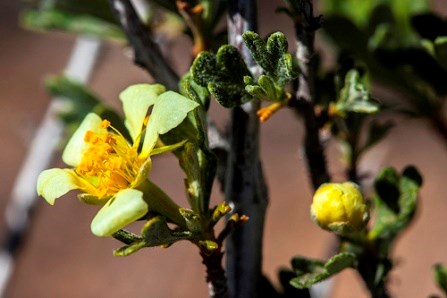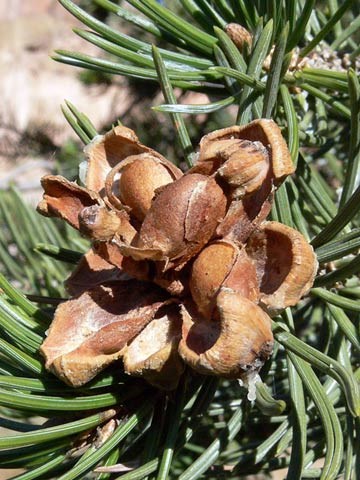
NPS photo For many, the word ‘desert’ conjures up images of a barren, lifeless expanse of sand. This desert actually supports a surprising diversity of plants (and animals) that can be seen by the careful observer. Shrubs and trees are the most visible plant life at Hovenweep, but monsoon rains bring impressive wildflower blooms and low-lying cacti may surprise the careless hiker! 
NPS Photo by Jacob W. Frank EnvironmentsHovenweep is located on Cajon Mesa in the heart of the Great Sage Plain, which stretches from Cortez, CO, to Blanding, UT. As the name of the area suggests, abundant sagebrush is one of the vegetative features of this arid, high desert zone. The highest and wettest point on Cajon Mesa is northeast of Cutthroat Castle at 6,800 feet, with an average annual precipitation of 15 inches. From there, the mesa’s elevation drops 1,900 feet, sloping gently to the southwest. It reaches its lowest and driest point near Cajon Ruin, where average annual precipitation is about 6 inches. Four distinct vegetative groups can be identified at Hovenweep: pinyon-juniper forests blanket Cutthroat Castle; sagebrush interspersed with juniper trees are found around Holly, Horseshoe and Hackberry; sagebrush is dominant at Square Tower; and Cajon is surrounded by scrubland. The park contains about 325 different plant species. Types include shrubland, mixed sage and juniper woodland, pinyon-juniper forest, and riparian communities. Rabbit brush, cliffrose, Mormon tea, yucca, and serviceberry, which were important to prehistoric ancestral Puebloans, are all still common. Historic sheep grazing eliminated much of the park’s ground cover and caused soil loss, but exotic plants have not had a great impact to date. Select a Park:Select a Species Category (optional):
Search results will be displayed here.

NPS photo Life in the DesertPlants fill a number of important roles in all ecosystems and deserts are no exception! There would be no animals without plants, because plants are the foundation of the food web supporting everything above them. In many cases plants provide important animal habitat as well, whether it is a shrub providing a rattlesnake with a cool place to hide, a narrowleaf yucca (Yucca angustissima) providing a woodrat with nest-building materials, a snag serving as a perch for a hawk searching out its prey, or a ringtail sleeping in a tree hollow. Humans depend on desert plants so much that, without them, it would be much too hot here to live! In the dry sandy desert, plants can capture dust and filter pollutants, making the air we breathe cleaner. Plants also convert carbon dioxide to oxygen in an energy-producing process called photosynthesis. This conversion accounts for a major reduction in CO2, which is considered a primary "greenhouse" gas. In other words, plants help control our global climate! Plants are also vital to humans for the food, medicine, and raw materials, with which we make clothing and build houses. Read More |
Last updated: February 22, 2021
